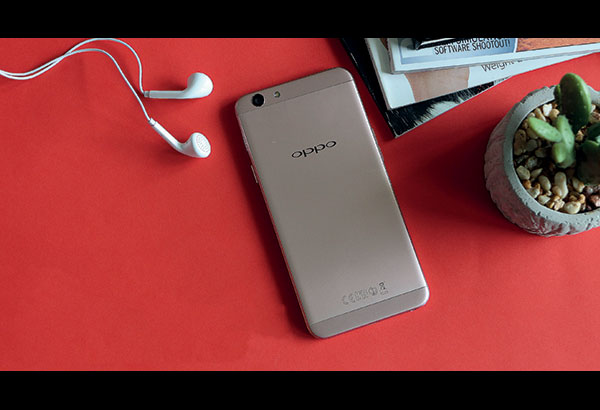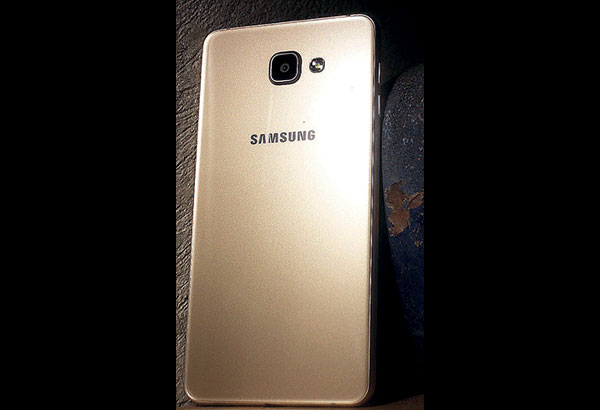This week in tech: The Oppo F1s is an affordable ‘selfie expert’

The Oppo F1s is an affordable ‘selfie expert’
MANILA, Philippines - Oppo announced the F1 Plus (the R9 in its country of origin) to great fanfare, with the company estimating over seven million units sold since the phone’s release in March. And Oppo isn’t done with the F1 branding yet, as it recently made the F1s official in some markets, namely China, India, Malaysia, Thailand, Vietnam and the Philippines. A subsequent rollout is slated for the rest of Southeast Asia and regions where Oppo operates.
Another “selfie expert,” the F1s is essentially a much cheaper F1 Plus that has fewer attractions but offers longer battery life. It has more bells and whistles than the smaller F1, so in way, it’s some sort of a middle choice between the two previous F1 phones, the Goldilocks choice, if you will.
You get a slightly larger 5.5-inch phone featuring a nearly identical metal unibody frame with the same polish and attention to detail as that of the Plus model. It also runs the almost two-year-old Android Lollipop software, which could turn off seasoned Android users.
Beyond the F1 comparison, the F1s is likely capable of better selfies than any phone in its price point.
There are two metallic bands that run across the rear panel; two more wrap around the sides; the bottom edge houses the speaker, headphone jack, microUSB port, and what’s likely a cutout for the mic hole. The physical home button that also functions as a fingerprint reader is sandwiched between the backlit back and recent apps keys. Setup takes seconds, and engaging the reader is fast and, more importantly, accurate.
The F1s makes use of a bright 720p display with curved-edge Gorilla Glass protection. The resolution isn’t ideal for a phone this size, so those who want a sharper screen without spending too much should probably look elsewhere. That’s what’s great about today’s smartphone market: With so many options available, you don’t have to settle.
Inside the F1s, you’ll find an octa-core MediaTek processor, alongside 3GB of RAM and 32GB of expandablage store. We haven’t put the system-on-a-chip through its paces yet, but it runs Pokémon Go just fine. The 3,075mAh battery is the largest of any F1 phone, but it could take a while to charge from zero to full, as the F1s lacks quick charging.
But the best feature of all may be the selfie camera, which has a 16-megapixel sensor and an impressive aperture size of f/2.0. That combination, plus Oppo’s camera algorithm, results in bright and crisp self-portraits that look like they were captured by an upmarket phone’s rear camera. The F1s is also capable of shooting full-resolution video for superior video calls and conferencing.
Compared to the front-facer, the 13-megapixel camera around the back sounds a bit underwhelming, even though that’s not the case. But then again, how often do you come across a device with a more advanced camera on the front than on the rear?
In the Philippines the Oppo F1s is priced at P12,990.

Samsung Galaxy A9 Pro
Samsung Galaxy A9 Pro review
The Galaxy Note 7, which we’re sure many of you have heard about by now, isn’t the only new Samsung smartphone with a huge display out there. The Galaxy A9 Pro has more screen space, plus a much more agreeable battery capacity that could get it to last through another day without a recharge. In other words, it is big for good reasons.
But are those reasons good enough to warrant a purchase over similar devices from Apple, Asus, Huawei, Oppo, Xiaomi and others? That would ultimately depend on how much value you attach to what the A9 Pro brings to the conversation. And how much you’re willing to spend on a smartphone that could easily negate the need for a tablet.
There’s no getting around how unwieldy this device can get for people with small- to regular-sized hands, and that’s largely by design to accommodate a generous six-inch screen and an even more generous 5,000mAh battery.
The metal frame feels solid and substantial and resilient enough to cope with the rigors of an active lifestyle, and the chemically strengthened glass back suggests a reassuring sturdiness. At 210 grams, it’s heavier than the Apple iPhone 6s Plus, the Samsung Galaxy Note 7, and the Xiaomi Mi Max, which are big phones, too.
As intimidating as the A9 Pro may sound, however, its makers likely did the best they could to keep the dimensions as small as possible; the smartphone is pleasingly thin (7.9mm) given the battery size, and the bezels on the left and right edges have been kept to a minimum, adding to the charm of the full-resolution Super AMOLED display.
Once again, Samsung has done a fantastic job with the A9 Pro’s panel, providing punchy, saturated colors, inky blacks, and super-white whites. Brightness levels are high enough that the display remains visible outdoors on a sunny day, and viewing angles are consistently good. The additional screen real estate is better suited for video consumption and playing games. To keep the panel in immaculate shape, it is protected by scratch-resistant 2.5D Corning Gorilla Glass 4.
But however big and ideal, the size of the display introduces a couple of caveats: First, trying to swipe across or get to the top of the screen can lead to some finger gymnastics that are dangerous to pull off while holding the glass-backed A9 Pro with one hand; second, text and images don’t appear as crisp on the phone as they would on a higher-resolution panel.
Also on the front is a home button that, as is usually the case with Samsung’s modern midrange and high-end handsets, houses a fingerprint scanner. It works well, and we can imagine that it’ll be difficult to go back to using a PIN or a password once the user gets the hang of unlocking the device with a thumbprint.
The 16-megapixel rear camera with optical image stabilization and an f/1.9 aperture produces above-average results, though dynamic range and exposure can be hit or miss. Switching to Pro or HDR mode helps, but at night or in the dark, there’s little you can do to mitigate color and noise issues.
The selfie cam has an eight-megapixel sensor and the same aperture as the main camera, allowing for sharper, clearer, and more detailed snaps. The wide lens means you can fit more people or more of the scene in the frame.
Under the covers is a Qualcomm Snapdragon 652 system-on-a-chip, alongside 4GB of RAM and 32GB of expandable storage. Those specifications aren’t meant to draw a crowd, but the processing package provides enough oomph to make you rethink the A9 Pro’s place in the Samsung hierarchy. The Pro naming convention isn’t just for show; this phone is a serious performer that rivals the best of the best from last year.
It powers through general tasks like web browsing and email with little to no lag; it can render demanding games at consistently high frame rates and for long periods of time without overheating; multitasking feels fluid and seamless, and navigating the Android Marshmallow-based interface is a pleasant interlude between apps.
Most notable of all is how long this phone lasts. If we wanted to drain the battery quickly, it would require a deliberate and focused effort, which is to say you probably won’t have to plug it to a power supply on a nightly basis. We found the A9 Pro — unlike so many in the segment — can get to a second day without enabling Ultra data saving mode, which will squeeze a few extra hours of use.
Its 5,000mAh fixed cell is the real deal, making the A9 Pro one of the most enduring phones we’ve ever tested. And when it does need charging, the battery replenishes at an impressive rate, thanks to Qualcomm’s quick charge tech.
The Samsung Galaxy A9 Pro sells for 3,499 yuan in China, P25,990 in the Philippines where it is already available. It’s rumored to launch in India next month; other markets are likely to follow suit. For a product that’s priced dangerously close to flagship territory — in this case, between $530 and $560 — the challenge is always justifying an existence among more affordable yet capable phones.
Fortunately for the A9 Pro, its winning mix of screen size and battery life, coupled with a fast processor, makes for an attractive option for power users who don’t want to overspend.
- Latest
























